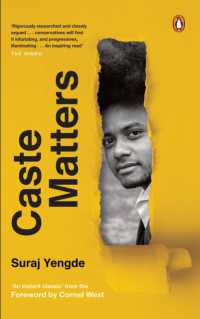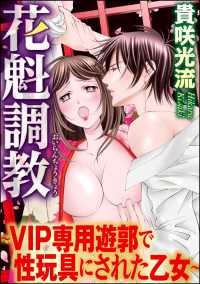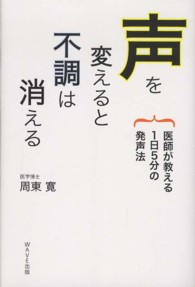基本説明
This volume explores, records, notates and documents the Kim Chukp'a school of kayagum sanjo. It is the result of collaboration between Chaesuk Lee, the ethnomusicologist Keith Howard and the composer and musicologist Nicholas Casswell. Two audio CDs accompany the book, one featuring Lee playing Kim's complete sanjo, and the second, a 'bonus' CD of a second sanjo for the six-stringed zither, komun'go, played by Kim Sunok.
Full Description
The Korean genre of sanjo is today one of the most popular genres of traditional music, taught in schools and universities within Korea, and a staple of national and international performance tours. Sanjo comprises a set of related pieces for solo melodic instrument and drum. A number of 'schools' (ryu) are recognized, each based on the performance style of a master musician, usually a musician from an earlier generation. Sanjo was first devised for the kayagum 12-stringed plucked long zither and is now played on all major Korean instruments. The solo melodic instrument is accompanied by a drum. The two Sino-Korean characters that comprise the term 'sanjo' can be translated as 'scattered melodies', but such a translation hardly does justice to the complexity of sanjo: each piece, played in entirety, can last for an hour, although in concerts players will often choose segments from this long piece to fit a specified time frame. Amongst contemporary performers, Chaesuk Lee has done much to develop our understanding of sanjo. In her career, she has combined scholarly research with performing. One of the first students of the Seoul National University programme in kugak, Korean traditional music, the first female professor of kugak in Korea, and today the only female music scholar in the Korean National Academy of Arts, she worked with the most senior master musicians of kayagum sanjo, chief amongst them Kim Chukp'a (1911-1989). Kim was the grandaughter of the putative founder of sanjo, Kim Ch'angjo. Kim Chukp'a had been a celebrated performer in her youth, but she retired as a professional musician in the early 1930s when she married her first husband. This volume explores, records, notates and documents the Kim Chukp'a school of kayagum sanjo. It is the result of collaboration between Chaesuk Lee, the ethnomusicologist Keith Howard and the composer and musicologist Nicholas Casswell. Two audio CDs accompany the book, one featuring Lee playing Kim's complete sanjo, and the second, a 'bonus' CD of a second sanjo for the six-stringed zither, komun'go, played by Kim Sunok.
Contents
Contents: Preface; The genre: kayagum sanjo; The instrument: kayagum; My musical life and sanjo: Chaesuk Lee; Analysis 1: mode, rhythm and regional identity; Analysis 2: a Deleuzian approach; Kim Chukp'a's sanjo: notation; References; Discography; Index.








